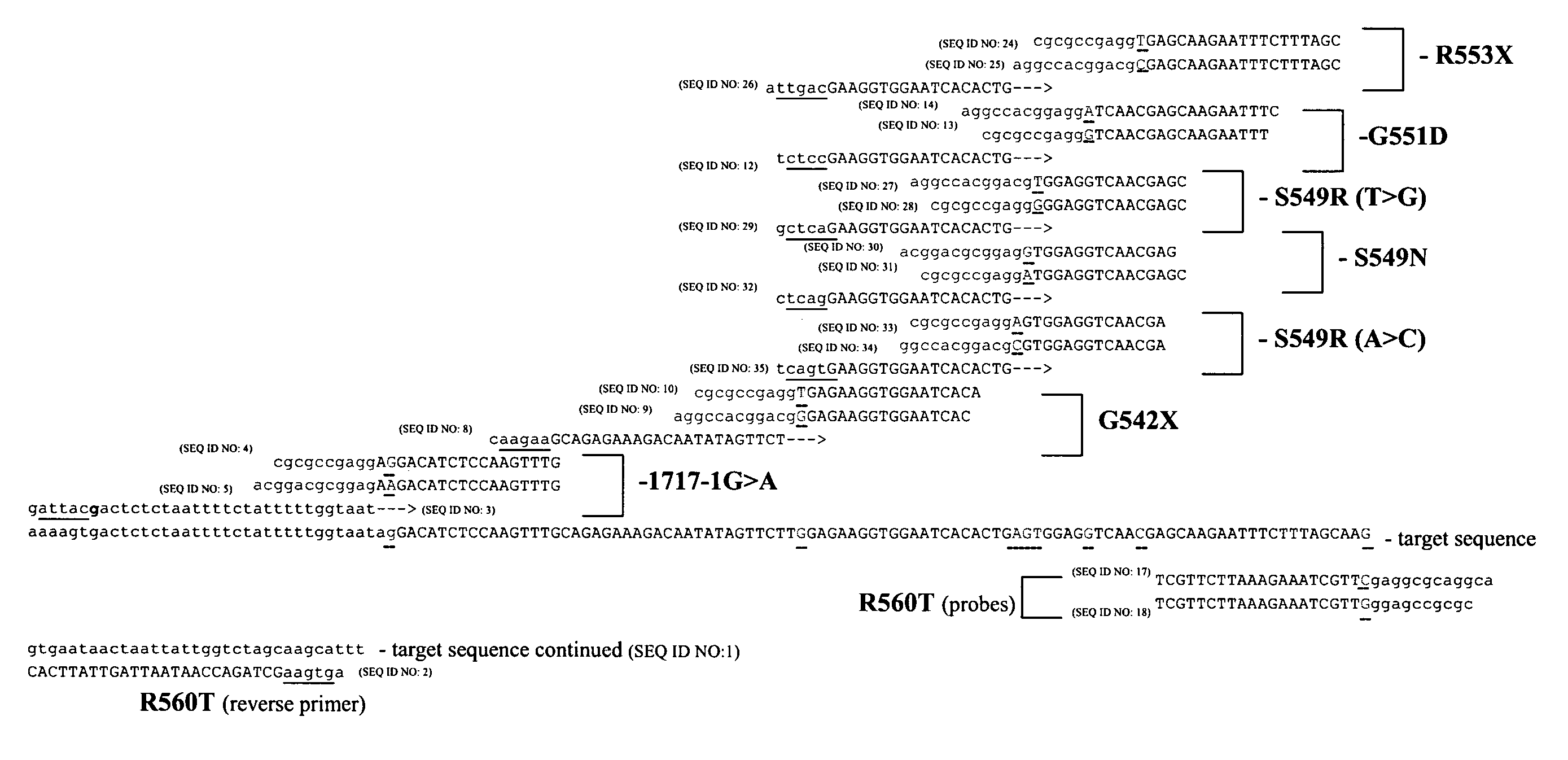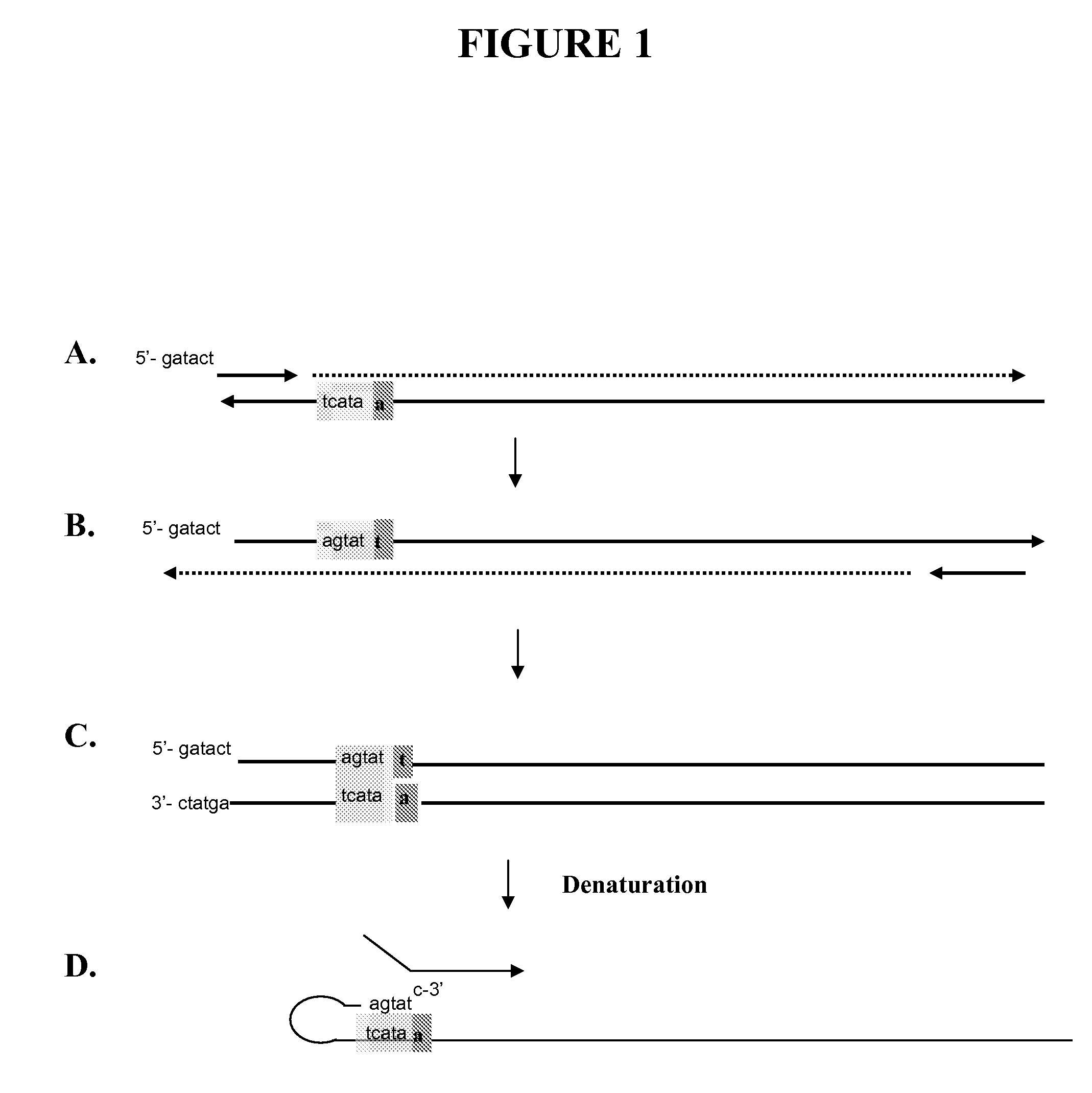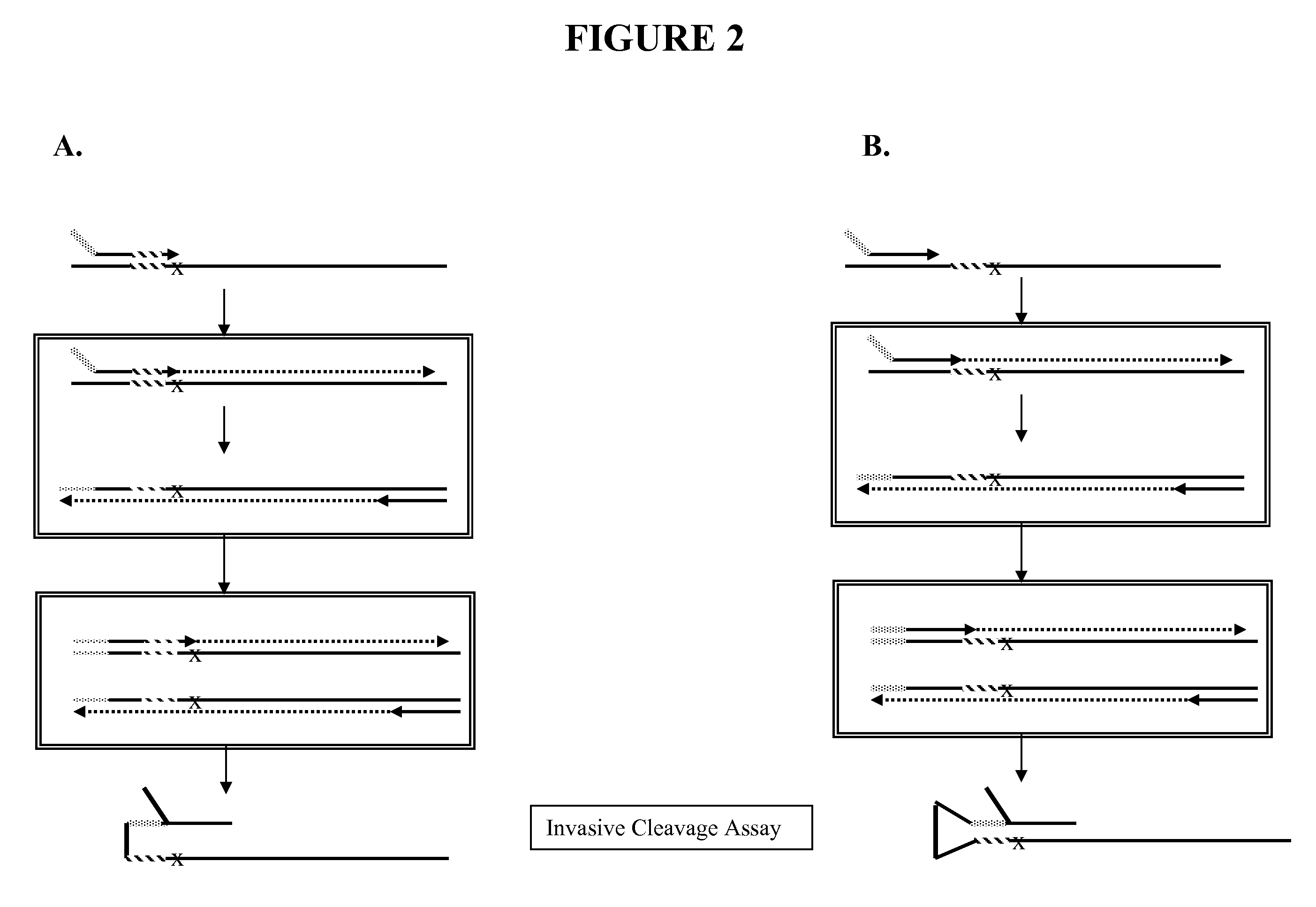Snap-Back Primers And Detectable Hairpin Structures
- Summary
- Abstract
- Description
- Claims
- Application Information
AI Technical Summary
Benefits of technology
Problems solved by technology
Method used
Image
Examples
example 1
CFTR Allele Detection with Snap-Back Primers
[0211]This Examples describes the use of snap-back primers to detect various CFTR alleles using genomic DNA and artificial samples. The samples tested were as follows: Coriell 28 gDNA (CFTR 1717-1G>A HET sample); Pooled Amplicon Control 2 (CFTR G542X HET); Coriell 15 gDNA (CFTR G551D HET sample); Coriell 9 gDNA (CFTR R560T HET sample); Coriell 39 gDNA (Wild type for all CFTR mutations tested). The reagents employed are listed in Tables 1 and 2:
TABLE 13.33x Invader-plus Buffer1x Final3.33xReactionFormulationComponentConc.UnitsConc.UnitsMOPS10mM33.300mMMgCl27.5mM24.975mMdATP0.025mM0.083mMdUTP0.025mM0.083mMdGTP0.025mM0.083mMdCTP0.025mM0.083mM
TABLE 210x Invader-plus Enzyme Mix1x Final10xReactionFormulationComponentConc.UnitsConc.UnitsCleavase VIII6.67ng / ul66.70ng / ulTaq Polymerase0.066U / ul0.66U / ulM Tris0.983mM8.93mMM KCl2.23mM22.33mMTween 200.02%0.22%Nonidet P400.02%0.22%Glycerol2.23%22.33%mg / ml BSA4.65ug / ml44.65ug / ml
The oligonucleotide mixes a...
example 2
Separate Analysis of PCR and Invasive Cleavage Assays Components
[0212]This Examples describes the separate analysis of the PCR and INVADER assay components of the INVADER-plus reaction described in Example 1 in order to determine the source of the FAM background of Example 1. The buffer mix, enzyme mix, and oligo mixes were all the same as in Example 1. The samples employed were as follows:
[0213]Coriell 28 gDNA (CFTR 1717-1G>A HET sample)
[0214]Coriell 18 gDNA (CFTR G542X HET)
[0215]Coriell 15 gDNA (CFTR G551D HET sample)
[0216]Coriell 9 gDNA (CFTR R560T HET sample)
[0217]Coriell 39 gDNA (Wild type for all CFTR mutations tested)
A signal mix for each oligo mix was made as follows:
3.33x Oligo Mix75 ul3.33x Invader-plus Buffer75 ul 10x Invader-plus Enzyme Mix25 ulRNase Free Water25 ul200 ul
Amplification mixes for PCR INVADER reactions were made as follows:
10x Primer Mix20 ul3.33x Invader-plus Buffer75 ul 10x Invader-plus Enzyme Mix25 ulRNase Free Water30 ul200 ul
Five ul of sample was...
example 3
Monoplex and Multiplex Detection with Snap-Back Primers
[0218]This Examples describes the use of snap-back primers in both monoplex and multiplex formats using the mixes described in Examples 1 and 2. Its is noted that, even though multiple amplicons are generated in reactions of this example, only probes for one mutation / polymorphism are used in the mix since these reactions are limited to two dyes (one for mutant and one for wild type). The samples, buffer mix, enzyme mix, and oligo mixes were all the same as in Example 2.
[0219]The monoplex oligo mixes for each allele (1717-1G>A, G542X, G551D, and R560T) were the same as shown in Example 1. The multiplex mixes were as follows. One mix, the “multiplex primer mix” contained all of the snap-back primers from Example 1, which includes SEQ ID NOs: 3, 8, and 12 (SEQ ID NO:12 is used for both G551D and R560T). Four other “probe / FRET” mixes were made, one for each allele, where each mix contained the probes and FRET cassettes described in ...
PUM
| Property | Measurement | Unit |
|---|---|---|
| Temperature | aaaaa | aaaaa |
| Temperature | aaaaa | aaaaa |
| Temperature | aaaaa | aaaaa |
Abstract
Description
Claims
Application Information
 Login to View More
Login to View More - R&D
- Intellectual Property
- Life Sciences
- Materials
- Tech Scout
- Unparalleled Data Quality
- Higher Quality Content
- 60% Fewer Hallucinations
Browse by: Latest US Patents, China's latest patents, Technical Efficacy Thesaurus, Application Domain, Technology Topic, Popular Technical Reports.
© 2025 PatSnap. All rights reserved.Legal|Privacy policy|Modern Slavery Act Transparency Statement|Sitemap|About US| Contact US: help@patsnap.com



